Share
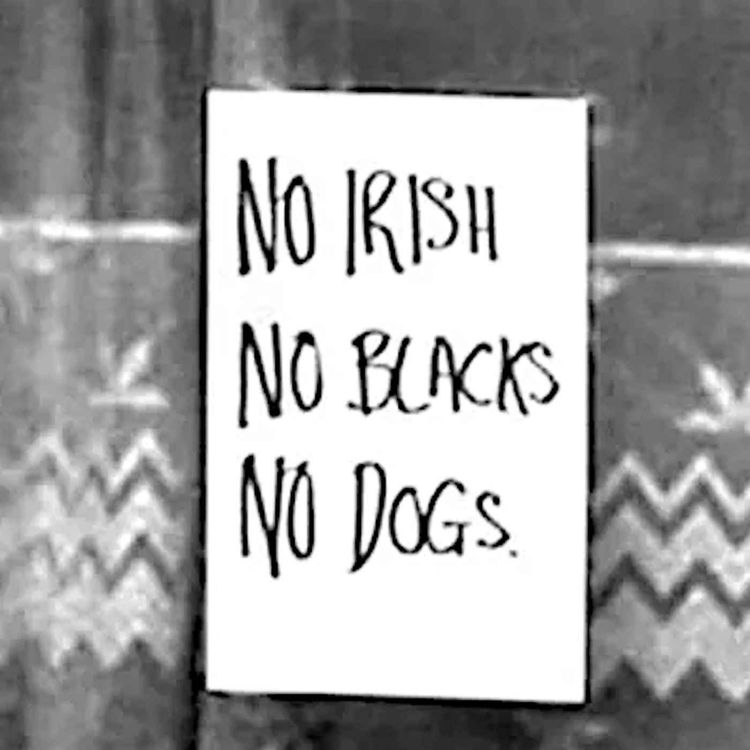
Irish History Podcast
‘No Irish, No Blacks, No Dogs’ - The Irish in London
The 1950s were a dismal time in Ireland. While the economy tanked, the catholic church, at the height of its power, maintained strict control over social life. Desperate to find a better life, nearly 500,000 Irish people emigrated. This staggering figure was equivalent to 80% of those born in the Free State between 1931 and 1941. This was a level of emigration unseen since the days of the Great Hunger of the 1840s.
The vast majority went to Britain with many making London their home. However they found the English capital isolating, lonely and unwelcoming. The poster in boarding houses stating ‘No Dogs, No Blacks, No Irish’ embodied the racism they faced. While many of the 1950s generation are no longer with us, in the late 1990s author Catherine Dunne recorded their stories. The experiences of these emigrants were the basis for her book An Unconsidered People - the Irish in London.
In this moving episode Catherine recounts the experiences they shared with her, the racism they faced as well as the isolation and loneliness. She also reveals the importance of solidarity within the Irish community, the legendary Irish clubs such as the Galtymore in Cricklewood and how many made a better life in the face of adversity.
You can find Catherine’s book An Unconsidered People - the Irish in London at https://www.newisland.ie/nonfiction/an-unconsidered-people-the-irish-in-london
Follow Catherine’s
facebook.com/Author.CatherineDunne
Become a member on Patreon - https://www.patreon.com/Irishpodcast and get
- My upcoming exclusive series on the Civil War with Dr Brian Hanley
- Join me on the supporters' trip to Conwy Castle in Wales
- Early access to the show
- Ad free episodes
- Hours of supporters only content
More episodes
View all episodes

Irish Americans & The Troubles: Unwelcome Outsiders or Allies?
33:13|This episode continues the story of NORAID - the Irish American organisation who were the voice of the IRA in the US. Jamie Goldrick and I delve into the complicated history of wider Irish American involvement in the Troubles. It's a history full of contradictions on both sides of the Atlantic. In the Republic, many criticised NORAID’s actions, yet did little themselves. Meanwhile, NORAID had little to say about the Vietnam War or the Civil Rights Movement in America.Together, Jamie and I pick apart this complex and often uncomfortable chapter in Irish and Irish American history.Jamie Goldrick is the producer of NORAID: Irish America & the IRA which screens on RTE on July 9th & 16th. Check it out on https://www.rte.ie/player/There are a limited number of tickets for my live podcast on Daniel O’Connell in Glasnevin Cemetery. It takes place on July 24th, entry is free but booking is essential. Contact irishhistorypodcast@acast.com for your ticket today.Sound by Kate Dunlea
NORAID: Did Irish Americans Fund the Provisional IRA?
44:32|In this episode, we explore the fascinating and controversial story of NORAID, the Irish American organisation at the heart of the new documentary NORAID: Irish America & the IRA. Joined by the film’s producer, Jamie Goldrick, we unravel the history that made NORAID so influential, examining its activities, its impact on the Troubles, and its lasting legacy in both Ireland and America. From high-profile stunts in Times Square to persistent allegations of gun running, this conversation offers fresh insights into a pivotal but often overlooked chapter of history. NORAID: Irish America & the IRA screens on RTE on July 9th & 16th. Check it out on https://www.rte.ie/player/Get your tickets to the live podcast on Daniel O’Connell at irishhistorypodcast@acast.comSound by Kate Dunlea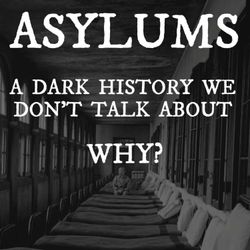
Irish Asylums: A Dark History We Don’t Talk About. Why?
37:54|In the 1950s, more than 20,000 people—over one percent of the adult population of Ireland—were locked away in mental asylums. This was the highest rate in the world, with more people confined in asylums than in all other institutions, including prisons, combined.Yet, despite these staggering numbers, the story of Ireland’s asylums remains largely unspoken. In this episode, historian Fin Dwyer is joined by Prof Brendan Kelly to uncover the history behind these institutions. They explore the origins of Ireland’s asylums, the harsh realities faced by those inside, and the complex reasons why communities didn’t oppose these bleak institutions but often welcomed their opening. Through powerful stories and revealing statistics, this episode shines a light on a dark chapter of Irish history that we still struggle to confront.Get an ad-free version of the show at Patreon.com/irishpodcastGet Brendan's book 'Inside Grangegorman' https://shop.ria.ie/products/asylum-inside-grangegormanSound by Kate Dunlea.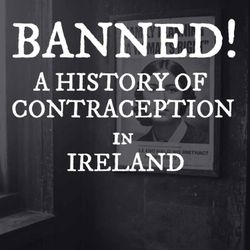
Banned: The Hidden History of Contraception in Ireland (Listener Favourite)
28:12|While we’re on the last week of our summer break, we’re bringing you one of our most popular episodes from the back catalogue.For over four decades, contraception was not just taboo in Ireland—it was illegal. From 1935 to 1979, selling contraceptives and even accessing information about family planning was strictly banned by the Irish government. These laws reshaped daily life, leaving couples unable to plan their families and forcing many to navigate relationships under the shadow of fear and uncertainty.In this episode, I talk to Dr. Laura Kelly from the University of Strathclyde, a leading authority on the history of contraception in Ireland. Laura reveals the origins of these bans, the motivations behind them, and the lasting consequences for Irish society.Next week, I return with the fascinating history exploring why Ireland institutionalised over 1% of its population in psychiatric hospitals and mental asylums.Find out more about Laura’s research and publications here.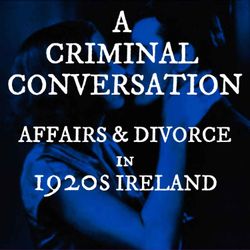
[Classic Replay] A Criminal Conversation: Affairs & Divorce in 1920s Ireland
40:52|A story from the 1920s that will reshape the way you view our great grandparents lives!Unfortunately, there’s no new show this week, but I wanted to re-share an episode I really enjoyed making two years ago. It'll well worth another spin.In 1920s Ireland, Alice Morton’s marriage breakdown sparked a sensational divorce trial. Accused of adultery, Alice’s sex life was laid bare in court, subjecting her to public humiliation.Her husband sued her alleged lover for damages, treating Alice as property under the law. However rather than endure the shame and exposure, Alice fled and lived in hiding for nearly two years. This podcast tells her story.Sound by Kate Dunlea. Additional Narrations Aidan Crowe & Therese Murray.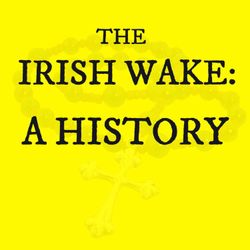
The Irish Wake: A History
50:11|The Irish funeral wake is a unique tradition where family and friends gather around the body of the deceased to share stories, remember their life, and celebrate their legacy. Often resembling a lively party with plenty of drink, this ritual is both a farewell and a celebration.Predating Christianity, the Irish wake stretches back thousands of years. In this episode, recorded at the Irish Wake Museum in Waterford, Donnchad Ó Ceallacháin and Clíona Purcell join Fin Dwyer to explore the fascinating history behind this enduring Irish custom.Clíona and Donnchad are curators at the Irish Wake Museum. The museum is well worth checking out. Book your tickets at https://www.waterfordtreasures.com/museum/irish-wake-museum/Sound: Kate DunleaSupport the podcast and get an ad-free versions of the show at patreon.com/irishpodcast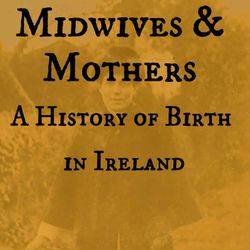
Midwives & Mothers: A History of Birth in Ireland
28:47|In times past, childbirth was a profoundly communal and intimate experience, guided by the steady hands and wisdom of community midwives. Known as Bean Ghlúine—the Women of the Knee—these women were among the most important figures in rural Irish communities.In this episode, I’m joined by historian Emma Laffey to explore the world of birth and midwifery in a time before pregnancy tests or pain relief. Through the remarkable story of community midwife Mary Anne Fanning, our conversation uncovers the history of birth and the key role midwives played in Irish communities. They delivered not just babies, but in an era of high infant mortality, they were also called upon to guide families through loss and tragedy.*This episode discusses themes of childbirth and infant loss, which some listeners may find distressing.*Sound by Kate DunleaResourcesVisit the Exhibition:https://www.museum.ie/en-IE/Museums/Country-Life/Exhibitions/Mary-Anne-Fanning-Remembering-our-Community-MidwivRead Emma's book Woman of the Knee Midwife & Handywoman for freehttps://skehana.galwaycommunityheritage.org/content/people/an-bhean-ghluine/an-bheanghluineFind out more about Irish community midwiveshttps://skehana.galwaycommunityheritage.org/content/category/topics/an-bhean-ghluineWatch this interview with community midwife Bina Kelly interviewed in 1983 https://skehana.galwaycommunityheritage.org/content/people/an-bhean-ghluine/an-bhean-ghluineiCAN: Irish Community Archive Networkhttps://www.ouririshheritage.org/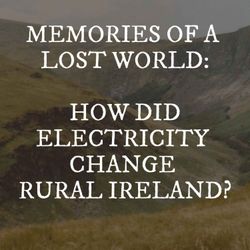
Glenmalure & Memories of a Lost World - How Did Electrification Change Rural Ireland?
36:54|Nestled deep in the Wicklow Mountains, Glenmalure was once a stronghold for rebels and a sanctuary from the outside world. But long after the echoes of rebellion faded, the valley remained a place apart, where the comforts of modern life arrived late. Glenmalure was only connected to the electricity grid and running water in the late 20th century, and the rhythms of daily existence were shaped by isolation, resilience, and community spirit.In this evocative episode, which concludes a series on the Wicklow Military Road, historian Fin Dwyer shares the stories of people who lived in this isolated and remote valley.Recorded in a 200-year-old inn, this episode weaves together personal recollections, local history, and the enduring landscape of Glenmalure. It is a tribute to a way of life that has only recently disappeared!The episode features the voices of Carmel O’Toole, Michael Fewer, Marion McEvoy, Hugh McLindon, and Pat Dunne. This episode would not have been possible by the hours of recordings with the Glenamalure Pure Mile Group.Thanks to the Glenmalure Lodge for faciliating this episode.A special thanks to Deirdre Burns, the Heritage Officer of Wicklow County Council.This episode was funded by Wicklow County Council and the Heritage Council.Sound by Kate Dunlea.200 Anniversary Events to mark the death of Michael Dwyer This year marks the 200th anniversary of the death of Michael Dwyer, the rebel who played a pivotal role in the history of the Wicklow Military Road. On August 23rd, 2025, a special event is being organised to explore Michael Dwyer, his life, and his legacy. Find out more here https://www.eventbrite.com/e/michael-dwyer-200-registration-1358221520129?aff=oddtdtcreatorBooks on Glenmalure and the Wicklow Military Road:Carmel O'Toole: Glenmalure: The Wild Heart of the MountainsMichael Fewer: The Wicklow Military RoadAdditional Sources:Marion McEvoy https://marionmcevoy.com/Glenmalure Lodge https://glenmalurelodge.ie/Glenmalure hostel (the former home of Dr Kathleen Lynn) https://www.hostelworld.com/hostels/p/15098/glenmalure-hostel-hostelling-international/
Glendalough & The History Tourists Are Never Told
35:00|Glendalough is one of Ireland’s most iconic and picturesque destinations. Its medieval monastery and stunning mountain landscape attract around one million tourists every year. However behind the postcard-perfect scenery lies a history that rarely makes it into the tourist brochures.In this episode, I veer off the well-trodden paths to uncover the real stories of Glendalough: stories of violence, exploitation, and transformation that have shaped the valley for centuries. This includes its early medieval history as a 'military industrial complex' and a very special interview with Robbie Carter - a former lead miner in the area.This episode will change the way you see one of Ireland's most famous historic sites.The podcast features Frank Tracy, Graeme Warren, Margaret Duff Garvey Pat Reid and Robbie Carter. A special thanks to Deirdre Burns.This episode was funded by Wicklow Co Council and the Heritage Council.Sound by Kate Dunlea.